As you head north, the Blue Ridge Parkway quickly drops from its highest point in Virginia (at Apple Orchard Mountain, on the previous page), to its lowest overall point at James River.
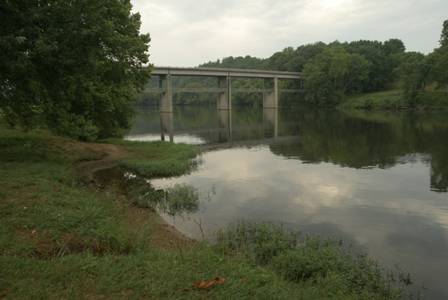
The James River Visitor Center is located on the north side of the river. If you’re following along with the same trip as me, the visitor center will be closed by the time you get here. But, you can follow a short trail that leaves the visitor center, then crosses back to the south side of the James River (notice the pedestrian walkway below the road deck).
The trail then splits. The longer of the two paths is the Trail of Trees. I bypassed it, and instead walked a short distance down the riverbank…
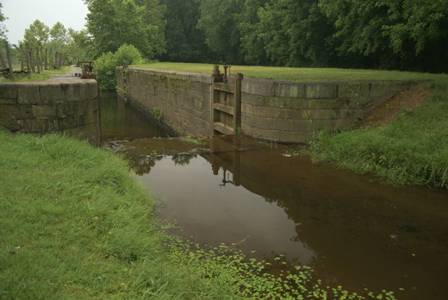
… to the canal lock exhibit. This is the Battery Creek Lock, which operated from 1851 to 1880. It had the capability of raising or lowering a boat 13 feet, allowing it to pass from the Kanawha Canal into the James River.
During the mid- to late-1800’s, the expansion of railroads made river and canal travel inefficient, and the Kanawha Canal was abandoned. However, before the railroad’s arrival, the river and canal system was crucial in moving people, food, and raw materials from the coast, through Richmond, and into the interior of Virginia.
Otter Lake
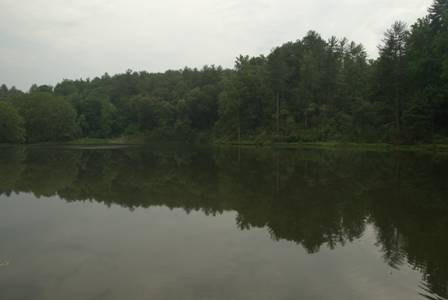
You will pass Otter Lake, just a short distance up the road from James River. If you brought your fishing gear, cast a line and try to catch bass (but if you do, you’ll have to throw ’em back).
Bluff Mountain Tunnel
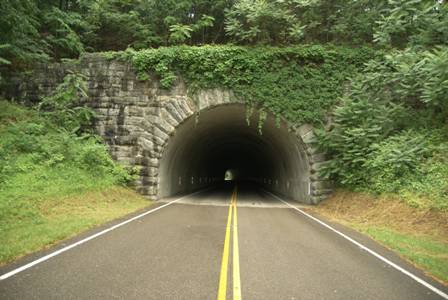
There are 26 tunnels along the Blue Ridge Parkway. All but one are in North Carolina — Bluff Mountain Tunnel is the only one in Virginia.
House Mountain
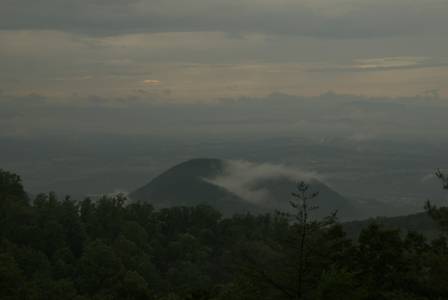
Somewhere out there is House Mountain, although I think I couldn’t see it because of the clouds. House Mountain is 3,612 feet, and at this point, the parkway is at 2,498 feet, so that mountain in the foreground must not be it.
Chimney Rock Mountain Overlook
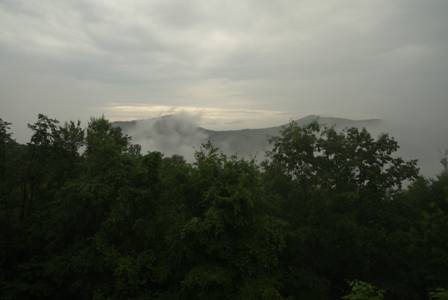
Peeking through the trees, and the clouds, there’s a brief glimpse at Chimney Rock Mountain, somewhere near the Blue Ridge Parkway’s intersection with US Hwy. 60, just up the hill from Buena Vista, Virginia. At least by this point in the day, the clouds had changed. Earlier, the sky was covered with a thick black blanket; now, wisps of clouds slowly rose from the valleys and mountainsides.
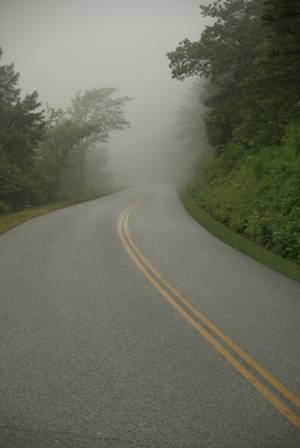
Of course at times, those wisps drifted directly over the road, creating some fog.
Irish Creek Valley Viewpoint
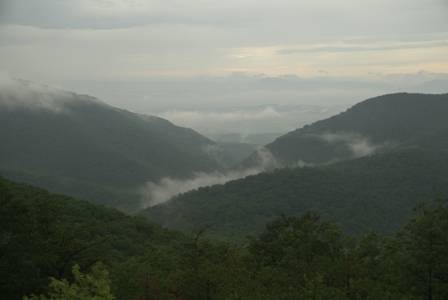
Irish Creek Valley is 1,500 feet below the parkway, at this viewpoint.
Yankee Horse Ridge Parking Area
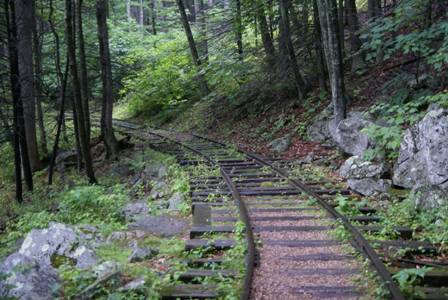
After taking in the view from one overlook after another, the stop at Yankee Horse Ridge offered something a little more exciting. Just above the parking area are the remnants of an old logging railroad.
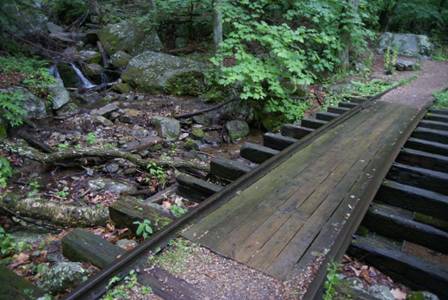
This old narrow-gauge railroad was built in 1919-1920. It was 50 miles long, and was used to haul more than 100 million board-feet of logs out of the forests of the Blue Ridge.
From the small trestle that crosses a tiny creek, you have a nice view…
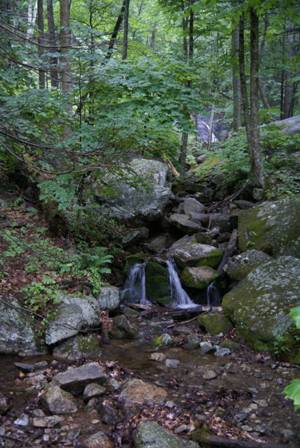
… of Wigwam Falls. It’s tough to see in this picture, but there’s more to this waterfall in the background. I didn’t have time to explore, to see if you could get any closer to the upper part of the falls (plus, it was raining again).
Big Spy Mountain Overlook
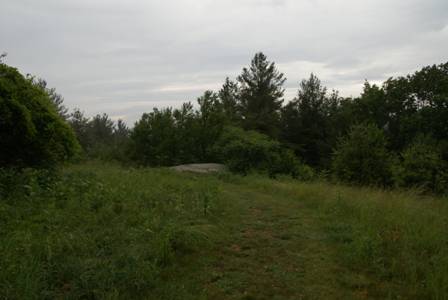
I’m not sure exactly what I was supposed to see at Big Spy Mountain Overlook. I walked up the trail from the parking area, hoping there would be a viewpoint at the top of the hill, but trees were all I found. Maybe I was supposed to look back the way I came…
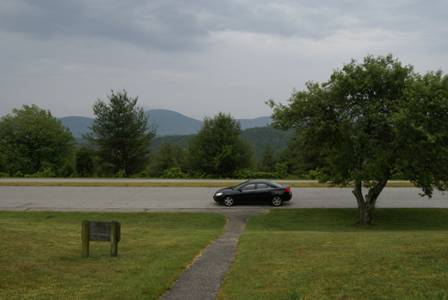
… and indeed, there are some mountains there, but I have no idea which one is Big Spy.
Fork Mountain Viewpoint
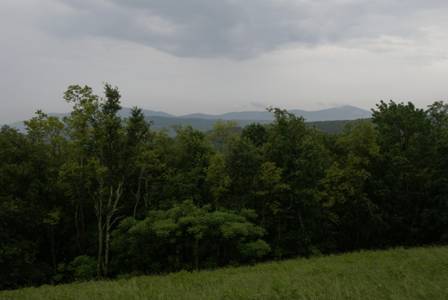
The top of Fork Mountain is 44 feet lower than the parkway at this point, so the view wasn’t very impressive.
20 Minute Cliff
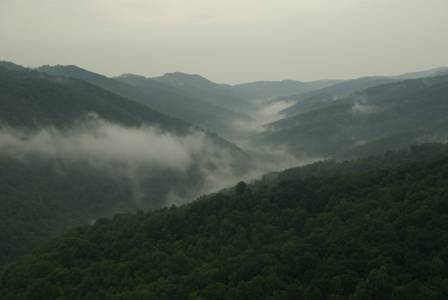
My next stop northbound on the parkway was at 20 Minute Cliff. The cliff served as a timepiece during the summer months, for the people who lived and worked in the valley below. They knew that dusk would arrive in the valley 20 minutes after sunlight hit the rocky face of the cliff.
Just a few miles beyond 20 Minute Cliff, I found one of the most incredible views on the parkway:
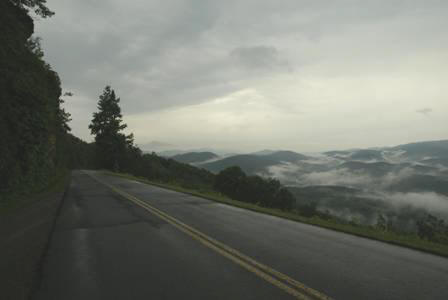
This stretch of road is perched on the edge of the western slope of the Blue Ridge, on a shelf that’s just wide enough to hold the roadway. There’s no official overlook here, and just one unofficial spot at the side of the road that’s wide enough to pull off. I passed it at first, then turned around…
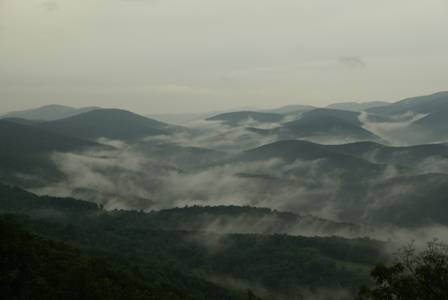
… because this view was too good to miss. The lumpy landscape seemed to stretch out forever, with steamy clouds rising from each hollow.
Rock Point Overlook
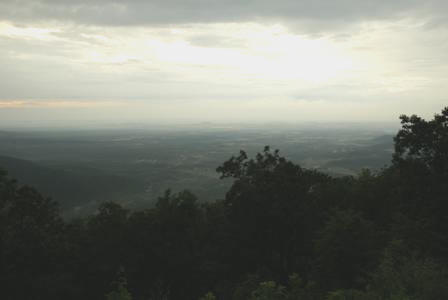
I made my final stop on the Blue Ridge Parkway at Rock Point Overlook, which is just a few miles from the northern end of the Parkway. From here, you can see the outskirts of Waynesboro, Virginia.
Interstate 64 is at the end of the Blue Ridge Parkway. On the other side of the Interstate, Shenandoah National Park and Skyline Drive begins. Since the day was almost over, I headed into Waynesboro and checked out a couple of motels, but quickly discovered that rooms were cheaper just a few miles to the west, in Staunton (where I-64 and I-81 meet).
Note: This trip was first published in 2008.

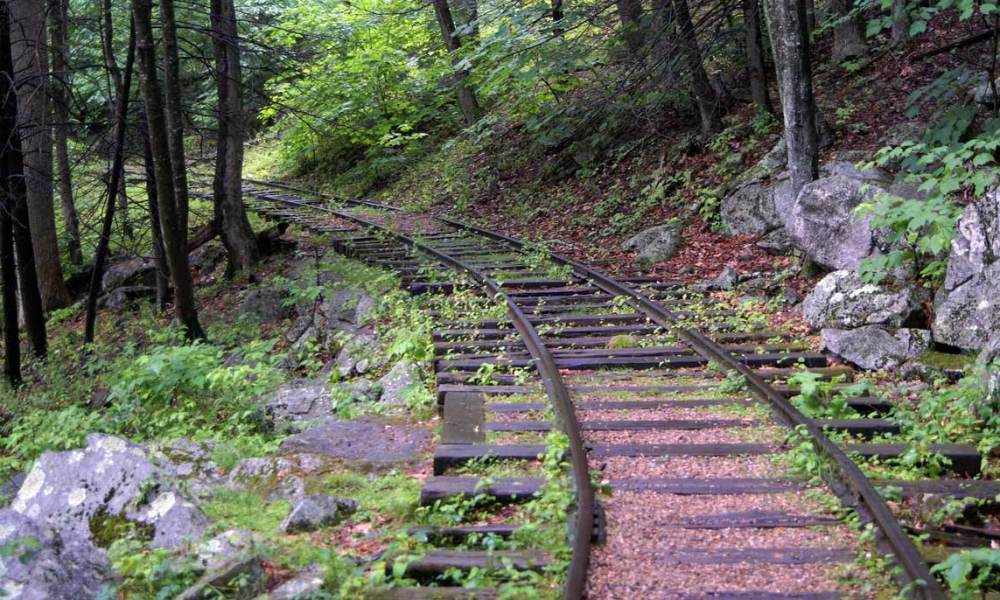


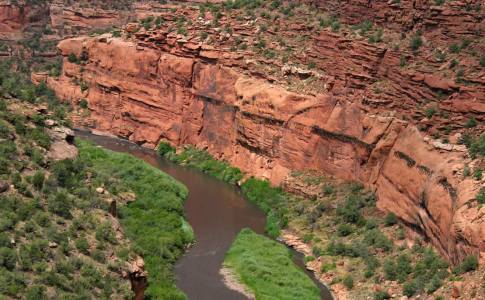
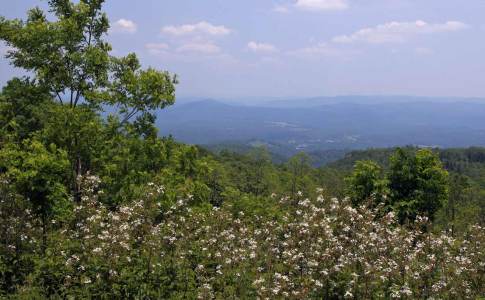
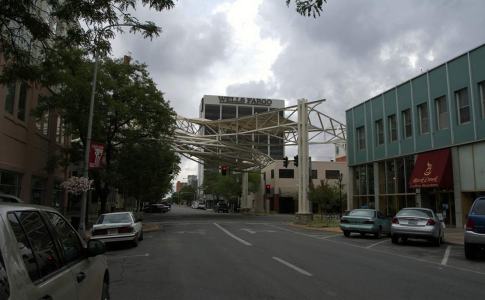
No comments